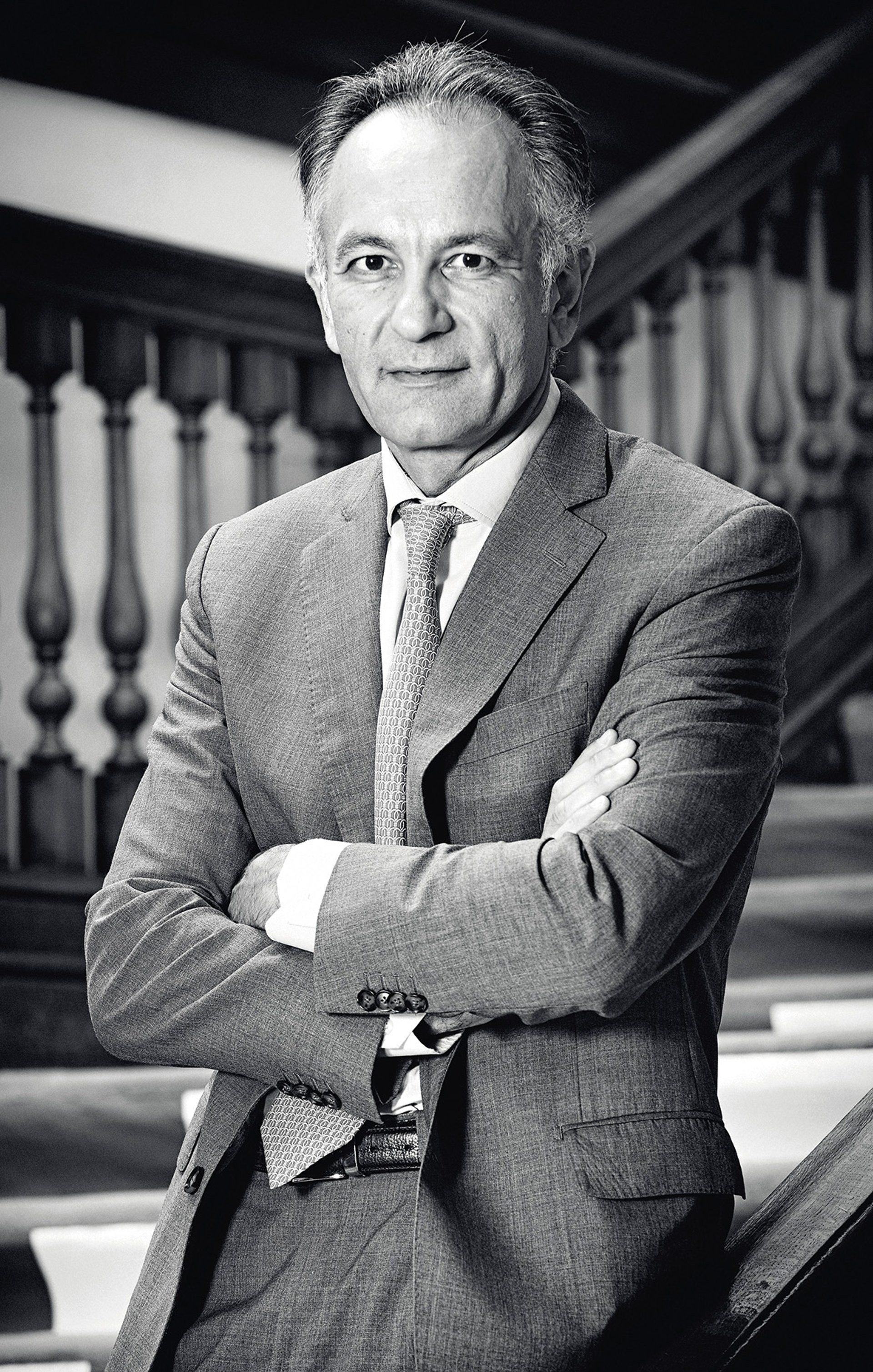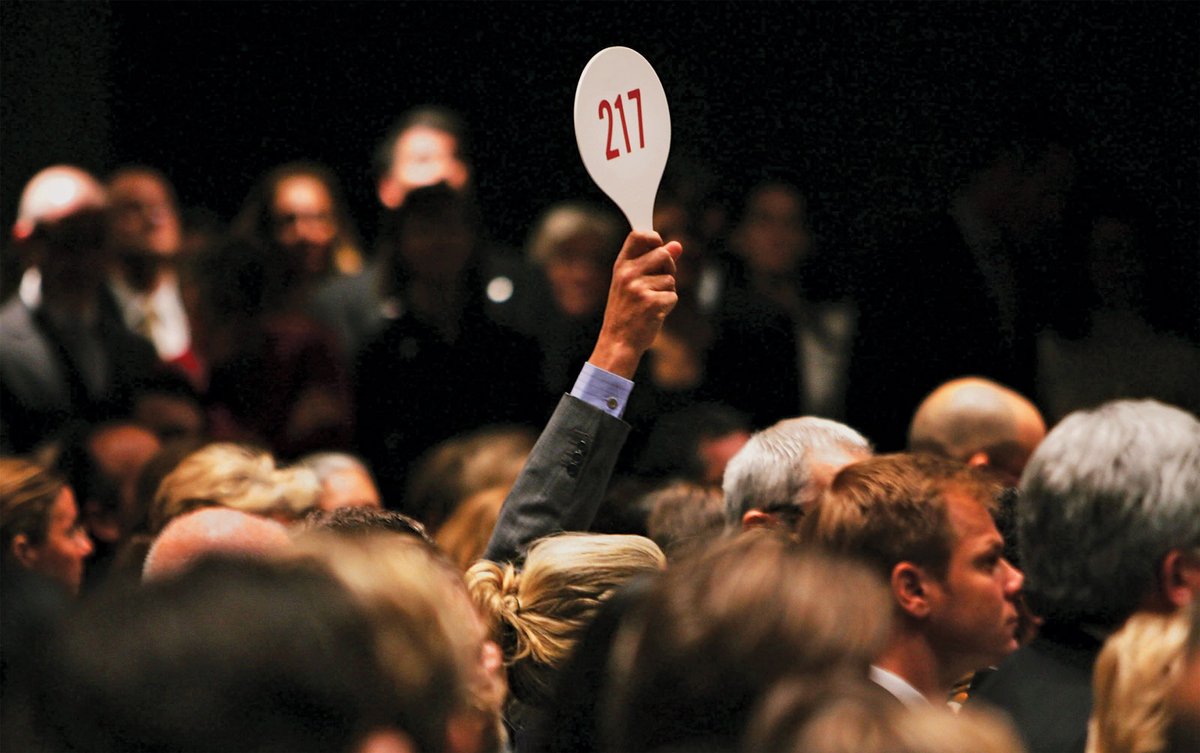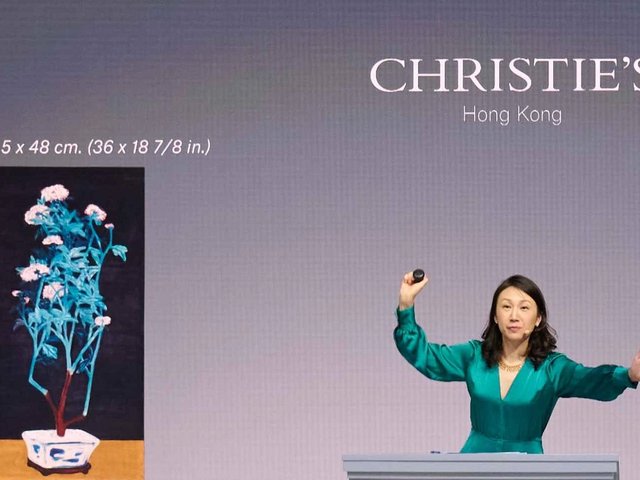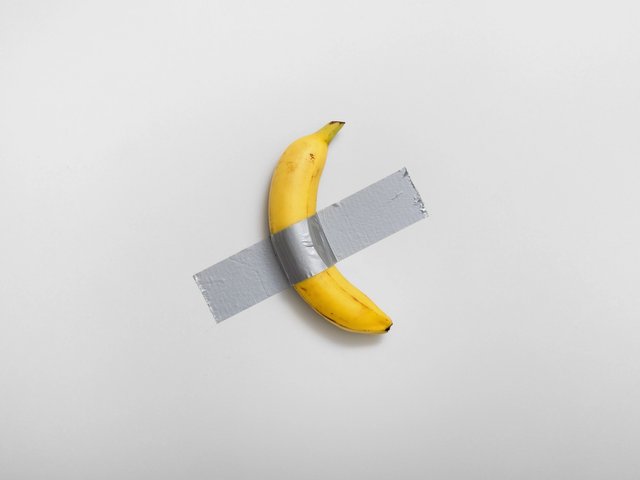As stratospheric prices have become almost the new normal, the auction business has been transformed in the past five years, and Christie’s, Sotheby’s, Phillips and Bonhams have all experienced changes at the top. Online-only auctions, curated sales and new categories are helping to tap into new audiences, while in the background, a mix of private sales and new guarantee structures is quietly propping up the bottom line. Moreover, auction houses have become adept at preventing the kind of public failures that lead to a jittery market. Here, three chief executives offer their thoughts on the future. (Sotheby’s declined to participate in this interview series.)

Guillaume Cerutti, the chief executive of Christie's Christie's Images
Guillaume Cerutti, Christie's
Guillaume Cerutti might appear to be the epitome of urbane French charm, but there are flashes of steel. Within the first months of becoming Christie’s chief executive in January 2017, he closed its much-loved South Kensington (CSK) saleroom in London, reduced its operation in Amsterdam, and cut 250 jobs.
Not a way to win the popular vote, but, as Cerutti says: “As anyone in a leadership position will know, and having been in this field for many years, I felt that the difficult decisions had to be taken quickly.” These decisions were “not easy but absolutely necessary, because the company needed to be projected in the future with a different footprint”. That future is in Asia, Los Angeles and online, not sleepy South Kensington.
On closing CSK, Cerutti says: “Emotionally it was a very difficult choice for the company, but also difficult to explain to our clients”. He adds: “For many, South Kensington was their first experience with Christie’s, where they could find what they wanted to buy at every price point.” But like provincial bank branches in the internet banking age, the local saleroom feel of CSK was outmoded within a digitally focused, global company. Some CSK sales have been transplanted to the grander King Street premises and the company’s strong 2017 results—global sales rose by 26% in 2017 to £5.1bn ($6.6bn)—“legitimised our decisions early last year”, Cerutti says. Sales of decorative arts, one area to be disrupted by the CSK closure, rose 20% to £191.4m.
Asian buyers accounted for 31% of global spend in 2017, and the company has premises in Shanghai and Beijing. But Cerutti says regulation (specifically that the company cannot sell any objects from before 1949) is a barrier to further expansion on the ground in mainland China: “We are trying to convince the authorities that we are taking mainland China very seriously, but that the rules will have to change in order for us to do more there.”
When easier profit can be turned on luxury goods or contemporary art, why keep the less profitable, more traditional collecting sectors? “Clearly, we have to sell Impressionist and Modern art, post-war and contemporary art, jewels, and Asian art—maybe the four most profitable fields at the moment—but at the same time we need to keep in our offering the ability to buy in antiquities, books and manuscripts, African and Oceanic art [and] 19th-century paintings because all these fields together make Christie’s.” At a time when many are worried about a knowledge drain in traditional fields, Cerutti maintains that knowledge is the company’s “main asset” and, to nurture young experts, he believes that “our mentoring programme is key; we have to find the promising young specialists, then ensure that they can grow”.
Christie’s recently reported a 25% gender pay gap and although Cerutti stresses “there is no salary inequality, meaning that a woman in the same position as a man is paid the same”, he acknowledges the top level of the company is more male. To change this, he is “positioning women in top roles”, citing the promotion last year of Giovanna Bertazzoni to co-chairman of the Impressionist and Modern art department. While men and women start their career at the same level, “at some moment, while the men continue to progress within the company, there can be a disruption with women”, Cerutti says. Childbirth is one factor, but he also thinks women can be less likely to ask for a pay rise. He says Christie’s has a responsibility to help change the male-dominated culture: “Historically, we have put more men than women in senior positions, so you are building an expectation in your clients who are accustomed to seeing a man. So if you don’t demonstrate some courage and promote women, you will never change anything.”
Last year, 37% of new Christie’s buyers came in online, but converting the one-off bidder into a regular—and, loyal—client is more tricky. As Cerutti says, the real challenge “is to make sure that once they bid with us, we are able to convince them to come back.” Forging the same human relationship is difficult: “When someone first participates in a live auction, they have the feeling of entering a new club, on the internet, and that’s the beauty of it; the access to the sale is easier.” But the experience can be mundane in comparison. Getting online buyers into the saleroom is the aim, but Cerutti acknowledges “the experience can be a little intimidating, so we are working hard on this”, citing initiatives such as Christie’s Lates, an idea imported from CSK, which, historically, was the first rung on the ladder for most buyers.
Competition for market share between Christie’s and Sotheby’s is akin to tribal warfare. As Cerutti points out repeatedly, Christie’s is currently market leader. This, he says, “gives us the opportunity to be audacious”. Last year, its global sales (boosted by that $450.3m Leonardo da Vinci) were ahead of Sotheby’s by $1.1bn. But, unlike the publicly quoted Sotheby’s, privately held Christie’s does not have to reveal profit figures, so who knows what the margins are. And strong sale results do not guarantee security in this job—Steven Murphy, Christie’s chief executive from 2010, was fired weeks after the firm’s then highest-ever grossing contemporary art sale in November 2014 in New York. Industry opinion is that Christie’s private status allows it to be bolder in pitching for major consignments, such as the David and Peggy Rockefeller collection, which, when it sells in New York this month, is expected to make more than $500m.
Cerutti previously spent eight years at Sotheby’s Paris, first as its chief executive, then as chairman of Sotheby’s Europe, but he will not be drawn into comparing the two firms. But Sotheby’s purchase of companies such as Art Agency, Partners and Thread Genius might be considered audacious? Cerutti replies: “There are many possible strategies and, one more time, I don’t want to comment on the competition. For us, the priority is to concentrate more on the core activities.” Having a “very stable shareholder” in François Pinault is an “advantage”, Cerutti says. More stable than Sotheby’s? “From this point of view the two companies are radically different, of course, but I can comment only on Christie’s and say that being privately owned and his [Pinault’s] understanding of the business is a great advantage to us and our team.”
Cerutti rebuts ongoing rumours that Christie’s is for sale, citing that Pinault, his son and grandson recently hosted Christie’s management retreat in Paris—“a symbol of their commitment, in my view”. So Christie’s is not for sale? “No it is not; he [Pinault] is fully involved and committed to the life of the company.” Anna Brady

Ed Dolman, the chief executive of Phillips Phillips
Edward Dolman, Phillips
When Edward Dolman arrived at Phillips in July 2014, the heat was draining from the once scorching market for emerging artists. Launching waiting-list-only up-and-comers into the secondary market had been the company’s calling card, but Phillips’s owners—the Russia-based Mercury Group since 2008—knew a turnaround was in order. So they brought on Dolman, the former chief executive of Christie’s, who had left the auction house in 2011 to consult for the Qatar Museums Authority, and built a state-of-
the-art headquarters in London’s Mayfair, which opened in October 2014.
As the affable and candid Dolman tells it: “People were a bit snooty about Berkeley Square. They said, ‘Oh, well, it’s a fabulous building but, you know, an auction house isn’t just a building. And they were absolutely right. But a building like that does help.”
Having spent 27 years at Christie’s, Dolman sensed there was an opportunity for a smaller, more nimble player to disrupt the existing duopoly of Christie’s and Sotheby’s. While Phillips was strong on photographs and design, the trick, Dolman believed, would be to contain costs by concentrating on just six categories, and to increase profits by going after higher-value 20th-century material, where the seven-figure margins are more comfortable—and reliable—than those on the emerging end of the spectrum.
Dolman recruited an experienced team, largely drawn from Christie’s, to chase estates and groom major collectors for consignments: Robert Manley and Jean-Paul Engelen as co-heads of 20th-century and contemporary art, as well as Sotheby’s former worldwide head of contemporary art, Cheyenne Westphal, as chairman. Under their watch, Abstract Expressionists, such as Clyfford Still and Mark Rothko, and blue-chip Modern artists, such as Klee and Matisse, have infiltrated catalogues, and Phillips’s evening auctions are now branded “20th Century and Contemporary”, in contrast to the usual Impressionist and Modern and post-war and contemporary divide.
The strategy seems to be paying off: four years in, sales are up 77%. In March, Phillips hit £98m in its London evening sale—the firm’s best-ever result, and exponentially better than the £10.4m it made in the equivalent sale of February 2014. The star lot was a Picasso drawing of Marie-Thérèse Walter, La dormeuse (1932), brought in by senior adviser Hugues Joffre, which fetched £41.8m with fees, well above its £12 to £18m estimate—and without a guarantee. “We certainly have the capability and the expertise to sell Modern works,” Dolman says. “A lot of clients trust us with that material now. And three or four major Modern pieces in a year transforms our results.”
Phillips is not forsaking the emerging category; with its New Now auction, it is “very much still part of the Phillips DNA”, Dolman says. “But it is highly volatile, always has been.” He hopes the older material can be an anchor for the new: “I think everybody would now agree that there is a very clear continuum in the development of art from, say, 1910 through to where we are now.”
Slick showrooms and canny marketing aside, Dolman has also brought a hard-nosed deal-making sensibility, pushing for quality over volume, but also actively courting clients he sees as under-served by competitors. “If you’re selling a $7m or $8m piece, that value band can get lost very quickly in a bigger sale. But at Phillips we can give it real priority and focus”, he says. Of course, he cautions: “You have to guarantee things. I mean, you know that’s the truth.”
Last year’s New York evening sale in May contained 19 guarantees out of 40 lots; this year’s will have 13. Under Dolman, the firm has become more selective, however, and increasingly turns to third-party backers to dilute the risk: “You have to be prepared to walk away from a lot of material.” Phillips’s modest goal, he says, “releases us from some of the more irrational decisions that are made in our competitive marketplace for market share.”
Although Phillips will begin experimenting with online-only sales this year, Dolman sees a fundamental stumbling block to meaningful profit here. With the average value of online lots hovering around $5,000, he thinks “the great conundrum for all auction houses is how you can run an online sale on a different [cheaper] cost base from a normal sale… to have a way where your specialists don’t have to inspect every object, that you don’t have to bring it into a warehouse to photograph.” Dolman is optimistic about emerging technologies such as AI-assisted evaluations and the potential for a blockchain-based authentication system, but thinks it will be “some time” before they are widely adopted.
For now, encouraging people to bid in live sales is the priority, and partnerships with third-party portals such as Invaluable and Artsy have brought a new audience. Online bidding is also important in courting the Asian market; Phillips held its first sale in Hong Kong in 2015 and opened a showroom there in March. Next up for revival is the New York jewellery department, with the first auction scheduled for New York in November.
For Dolman, maintaining the balance he has struck is the next challenge. “The average value of a work of art at Phillips is over $100,000,” he says, which provides enough revenue to reward staff well and “keep them happy”. He continues: “If you’ve got the right people, the right focus and the right product, there’s no problem at all. And I’m determined to stay focused.” Sarah P. Hanson

Matthew Girling, the chief executive of Bonhams Bonhams
Matthew Girling, Bonhams
Matthew Girling displays a sense of nostalgia—or a showman’s touch—when describing how he got his start in the firm in 1988. “I started working for Bonhams as a family-owned business with one saleroom in Knightsbridge and one saleroom in Chelsea, and a small regional saleroom down in the west country, in Devon,” he says. Today, after a series of mergers, acquisitions and expansions undertaken since 2001, that family-owned auction house has nine salerooms from Edinburgh to Sydney, including locations in New York, Hong Kong and London, with offices throughout Europe and Asia. “It’s quite a bold claim to make, but I think it absolutely stands up to scrutiny, that if I look at our competition over the past 15 years, sure, they’ve changed, but not as much as we have,” he says.
Girling, a jewellery specialist who describes himself as “an auction animal at the end of the day”, was named the global chief executive in August 2015, having served as the head of Europe and Asia since 2013. He presides over 60 departments, many of them in arcane areas such as arms and armour, marine pictures and scientific instruments, in addition to fine, decorative and ethnographic art, cars, whisky and wine. Bonhams would not release turnover figures, but, according to Companies House records, 2017 revenues were up 8.3% from 2016, although the auction market worldwide swelled in double-digit recovery.
Taken together, most of the more niche categories contribute less than half of the company’s income, which Girling says might sound inefficient, “but that’s not to look at the business in a holistic sense, because there are departments that bring us into contact with some very important clients who have unusual collecting habits, who then feel warmly about Bonhams and are very happy then to have a conversation with us about pictures, motor cars, jewellery, or Asian art”—the four pillars of the business. While Bonhams’ car division is the largest by hammer, it is the pictures department that generates the most income, and has experienced the largest growth since 2013.
In 2016, Girling relocated from London to New York “to send a signal” about the company’s “absolute commitment to the US market”. Why? Partly generational maths: the wealth and collections created during the US’s post-war years are cycling into the market, and “there’s quite a lot of it to go around”. But Asia is not far behind in terms of importance. These days, “there’s not a single sale where there are not Asian bidders”, he says. “About a year ago, we had a collection of 17th-and 18th-century horse-drawn carriages in the UK. Sure enough, there was Asian bidding.”
Girling promoted Edward Wilkinson, the head of Bonhams’s successful Indian and Himalayan art department, to direct the business in Asia in July 2016, and, apart from the chief financial officer, the entire 15-man management team are all ex-specialists and department heads. Girling, who spent six years at Christie’s in the 1990s, believes this is one reason that Bonhams remains more “approachable” than its competitors. Pressed to elaborate, he says: “I think it plays out in a way that we listen to our clients—not telling them how to sell their collection or put their treasured possession to market, but listening to what they actually want from it. I’m pretty confident that our specialists are better at that.”
While his competitors acquire taste-predictive start-ups, invest in customer relationship management software and dabble in content production, Girling tries to keep a level head when it comes to new technology. “It’s very tempting to look at those bright and shiny tools and go out and grab them and say this is going to be transformative,” he says. “I’m very much of the opinion that you use the digital tool to amplify the things that have been most important to our business”: personal relationships. When Christie’s closed its South Kensington saleroom last summer, Girling resurrected an old slogan—“It’s you we value”—in adverts that attempted to position Bonhams’ secondary Knightsbridge saleroom in the void.
While he insists that “the beating heart of this business is the saleroom and its specialists… not its website”, Girling has enlisted an agency to undertake a “digital transformation” that will be rolled out over the course of this year and next. While he hedges on specifics, the main goal is bringing more accessibility to “our greatest asset, our specialists: more exciting ways to talk to them, more exciting ways to interact with them, better ways to consign objects with them.” One thing that it will not include, he says, is remote consignments where specialists do not physically inspect a work.
Girling’s chief challenge for the foreseeable future is to maintain and leverage the global network he now oversees. “The work is definitely harder,” he says. “Now you’ve got to take that infrastructure, those departments and take a proposition to the market that convinces people… to come to us, as opposed to the others. [Our competitors] are very successful. I’m not under any illusion there.” So what keeps him up at night? “That what is so magical and compelling about the auction experience might lose its relevance to a generation,” he says, citing “massive brands” and “huge marketing budgets” fundamentally altering the retail landscape. “But there are very few businesses you can point to that have been so enduring. Why should something that looks relatively unchanged for 225 years not continue being relevant?” Sarah P. Hanson




